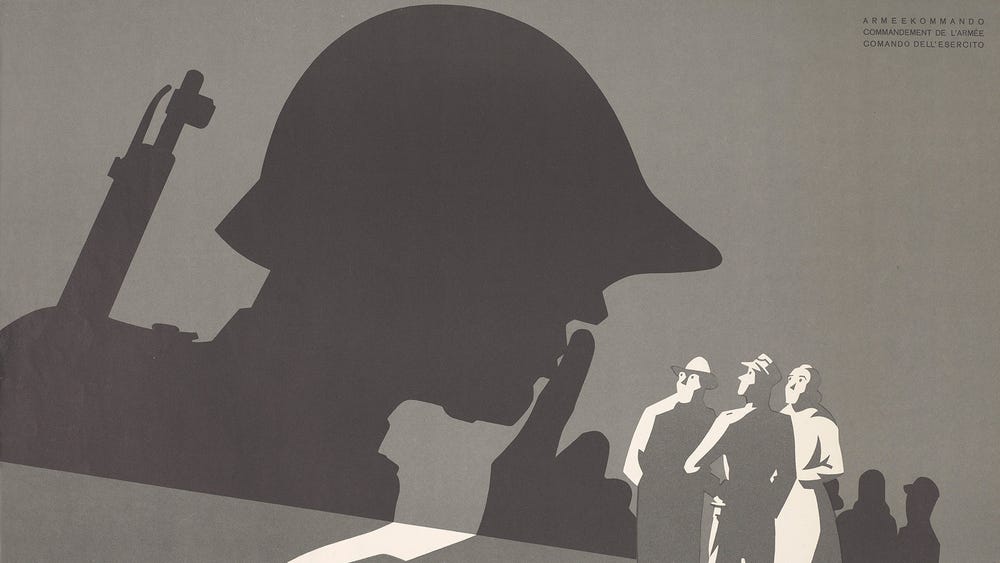Seiler (Swiss, active mid-twentieth century), Armeekommando / Commandement de l’armée / Comando dell’esercito (Army Command) (detail), ca. 1940. Color lithograph poster, Sheet: 15 3/4 x 22 15/16 in. (40 x 58.2 cm). Printed for Kanzlei A., Fine Arts Museums of San Francisco
Weapons of Mass Seduction: The Art of Propaganda
Jump to
Today a single tweet can reach millions of people instantaneously, but prior to the internet age, the mechanics of shaping public opinion by spreading information and ideas was more regulated, hierarchical, and specialized. For instance, during the First World War, complex military operations were needed to drop propaganda leaflet bombs from airplanes, saturating the landscape with paper messages targeting enemy soldiers and civilians. Ephemeral printed materials, in addition to radio broadcasts and motion pictures, were the primary vehicles of propaganda during the first half of the twentieth century. Among the most powerful tools of psychological warfare, propaganda posters weaponized the art of graphic design.
As international hostilities erupted during the 1910s and again in the 1930s, the American government and its foreign counterparts sought effective channels of communication with the public. Centralized bureaus — like the Committee on Public Information in the United States, the Ministry of Information in Great Britain, and the Reich Ministry of Popular Enlightenment and Propaganda in Germany — looked to the worlds of art and advertising, recruiting painters, professional illustrators, and filmmakers to tell their stories.
This exhibition features a selection of World War I and II–era posters from the collection of the Achenbach Foundation for Graphic Arts, shown alongside films, ephemera, and textiles from the 1910s to the 1940s. The design and content of these works demonstrate consistent strategies for selling ideas and manipulating public opinion that persist to the present day.
In the news
Stories
Sponsors
The exhibition is made possible in part by The Arnold A. Grossman Trust.




